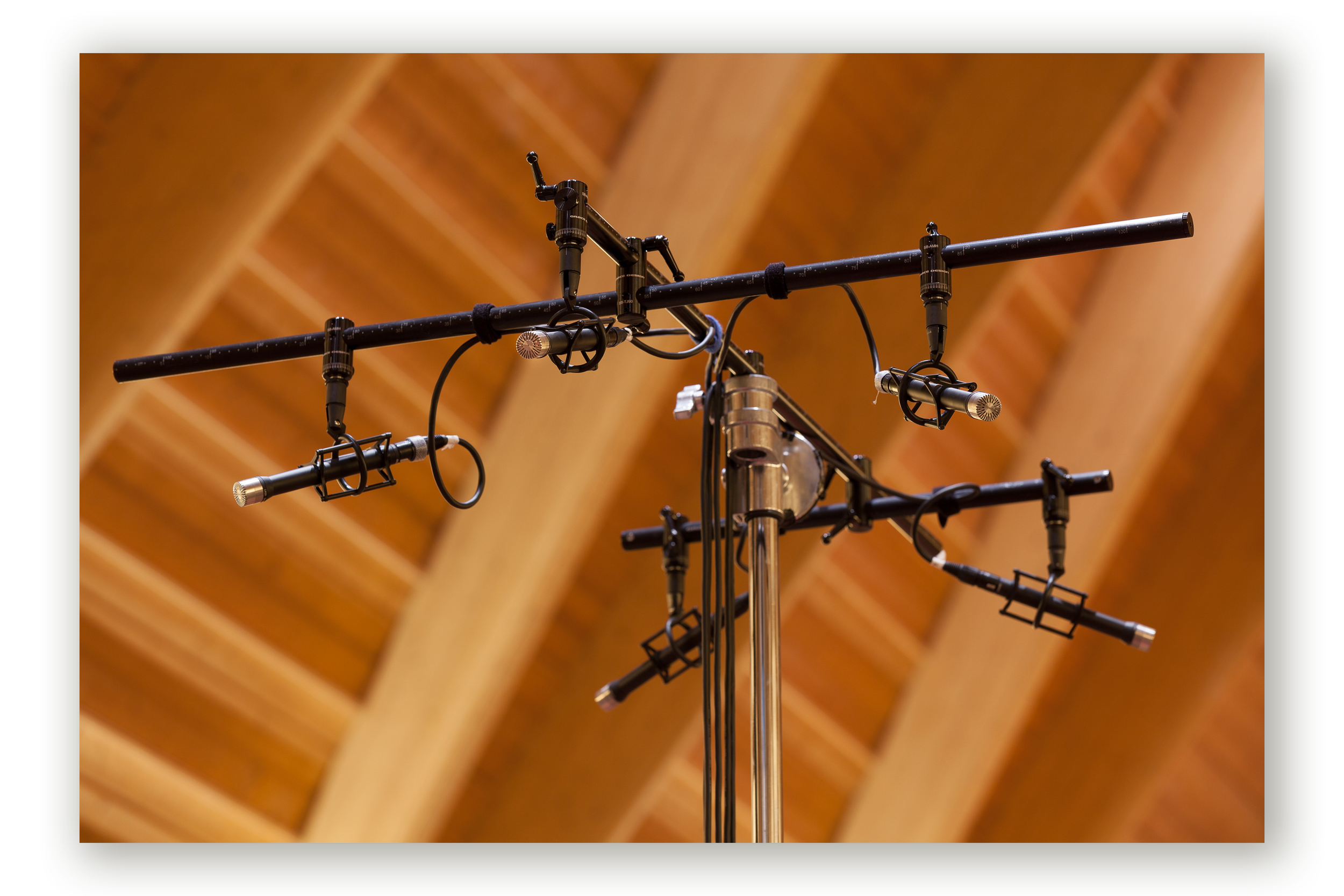What is Immersive Recording?
Immersive recording is an advanced audio capture technique designed to create a highly realistic and enveloping sound experience for listeners. This method aims to reproduce audio in a way that mimics the natural hearing experience, providing a sense of being physically present in the recorded environment. This is achieved using High Resolution Multi-Channel Audio Recording and Surround Microphone Arrays that are designed and customized for the needs of the space and performance. These recordings are then processed and released for multiple listening environments, ensuring the best listening experience for the audience.
What are the different types of Immersive Recording?
Immersive Recording can take many shapes and structures. In its simplest form, it can be described as ‘surround sound’ or 5.1 recording and playback. This deployment utilizes a five-microphone array positioned in a Left, Center, Right, Rear Left, and Rear Right configuration. This format presents a drastic increase in the stereo localization and immersive quality of a recording, enhancing the listening experience substantially. It is important to note that Immersive Recording in any form (including 5.1) cannot be enjoyed on certain playback systems. In the case of a loudspeaker system, all five channels must be represented by their own speaker and positioned to reflect the recording Array (L, C, R, rL, rR). Most headphones, both over-ear and in-ear can employ binaural technology to mimic 5.1 listening, though this is always a disadvantage when compared to loudspeakers.
The next step up in Immersive Recording is a 7.1 system. Similar to 5.1, this system adds a Side Left and Side Right channel, further increasing the stereo localization, allowing sources to greater envelope the listening.
Though less common, there is a 9.1 configuration that adds and additional 2 side channels, positions between the Side LR and Main LR positions.
The most advanced yet achievable form of Immersive Recording is 7.1.4 (sometimes referred to as 11.1). This configuration is noted for the addition of four height channels and its increased ability to interface with Dolby Atmos systems. This recording format presents unique challenges and limitations in regards to microphone placement, but there are a number of techniques available that can be modified and supplemented to meet the needs of the performance and room.
What makes Immersive Recording special?
In the realm of Classical and On-Location Performance Recording, the primary goal is capturing and reproducing the performance in the most transparent and enjoyable way possible. The limitations of a recording are evident; a loudspeaker will never be able to produce a sound with the same ability as the original instrument or source. In addition, the relationship between the signal sources and the room are diverse and intricate, multiplied in complexity by the location and head movement of the listener. This makes a faithful and transparent depiction of reality via playback to be an impossible feat. It t is in the best interest of the Producers and Engineers to instead seek to create a figment of the performance, gently shaping and forming it to maximize impact and clarity when reproduced with loudspeakers. With that being said, experiencing Immersive Recording is an unparalleled auditory experience. We believe this technology represents the current gold standard for amplified performance audio capture and playback. Ensuring a performance is captured in the highest resolution and largest scope of information possible ensures future proofing and best serves to honor all members of the musical process, from composer to performer.
Surround Array employing the use of five omnidirectional capsules
The ‘2L Cube ‘ Immersive Array utilizing 11 omnidirectional capsules.



